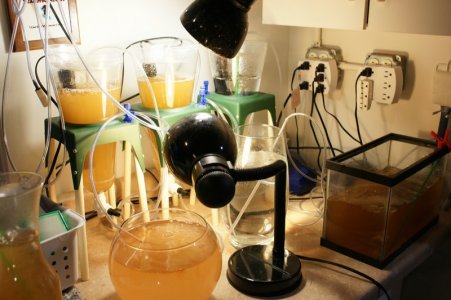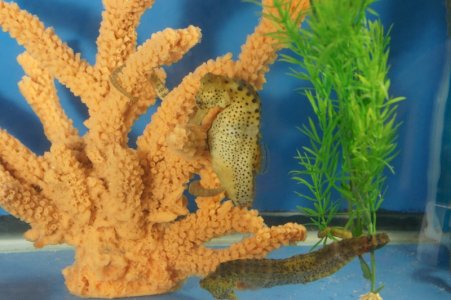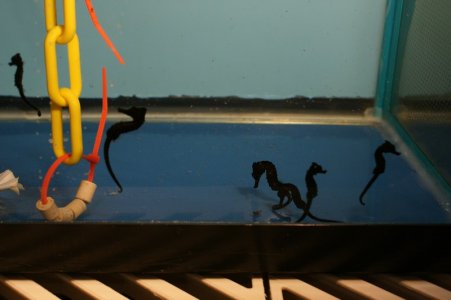Reverend Reefer
New member
ok so to alleviate my fears of what happens when my reidis get preggers, im starting to compile stuff to prepare. i've decided to go with a green water style of propagation/raising and see how this goes. here's what i have so far:
Things I can get now:
1. rectangular tank, maybe 10-15 gallons
2. plastic fishbowls, the rounded kind, maybe two
3. air pump
4. airline tubing, the flex kind plus some rigid parts for the ends
5. cotton wool
6. some 2L and/or 5L soda pop bottles, i'd need a couple for rotifers & baby brine shrimp
7. light, maybe one of those clamp on ones should be fine?
8. 500 micron mesh screen to keep rotifers from escaping?
9. hang on back filter, maybe Marineland 400 biowheel?
10. Cloram X or Amquel+? (sodium hydroxymethanesulfonate?)
11. Methylene blue
12. Formalin
Things i will need to know where to get, once dude gets preggers
1. Inert phyto/nanno
2. Live Nannochloropsis
3. Live rotifers
4. Live copepods
5. Baby brine shrimp eggs
is there anything im missing? this is my first time so im pretty nervous/excited about it. in the reefing world, biowheel filters get a bad name but in the seahorse propagation world, it seems alot of people use these biowheels. im not exactly sure what they are, i just stayed away becuz of RC peeps slagging them but are they good for SH raising? i need to get a filter sooner than later so i can get it running and seeded in preparation.
Things I can get now:
1. rectangular tank, maybe 10-15 gallons
2. plastic fishbowls, the rounded kind, maybe two
3. air pump
4. airline tubing, the flex kind plus some rigid parts for the ends
5. cotton wool
6. some 2L and/or 5L soda pop bottles, i'd need a couple for rotifers & baby brine shrimp
7. light, maybe one of those clamp on ones should be fine?
8. 500 micron mesh screen to keep rotifers from escaping?
9. hang on back filter, maybe Marineland 400 biowheel?
10. Cloram X or Amquel+? (sodium hydroxymethanesulfonate?)
11. Methylene blue
12. Formalin
Things i will need to know where to get, once dude gets preggers
1. Inert phyto/nanno
2. Live Nannochloropsis
3. Live rotifers
4. Live copepods
5. Baby brine shrimp eggs
is there anything im missing? this is my first time so im pretty nervous/excited about it. in the reefing world, biowheel filters get a bad name but in the seahorse propagation world, it seems alot of people use these biowheels. im not exactly sure what they are, i just stayed away becuz of RC peeps slagging them but are they good for SH raising? i need to get a filter sooner than later so i can get it running and seeded in preparation.




